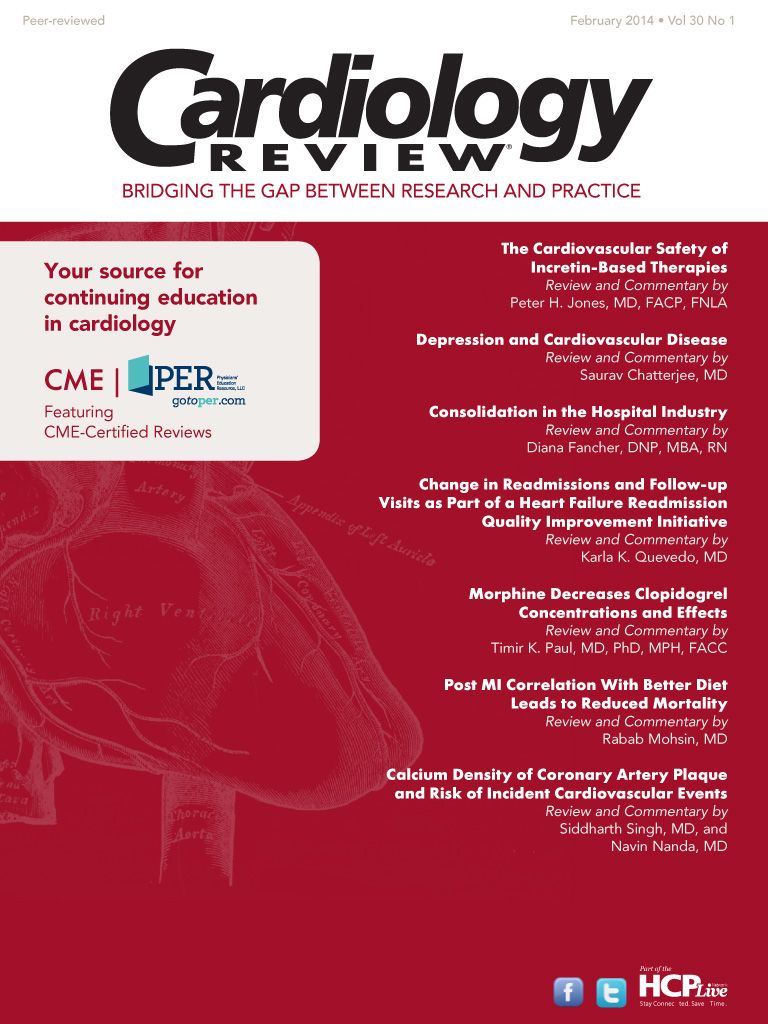Publication
Article
Cardiology Review® Online
News & Trends
New female-specific guidelines have been issued by the American Heart Association/American Stroke Association to more accurately reflect the risk of stroke in women across the lifespan and to address the gaps in current risk scores.
Guidelines Issued for Stroke Prevention in Women
New female-specific guidelines have been issued by the American Heart Association/American Stroke Association to more accurately reflect the risk of stroke in women across the lifespan and to address the gaps in current risk scores. It is the first such guideline dedicated to stroke risk and prevention in women.
Women are disproportionately affected by stroke, and it is the third leading cause of death for women, compared with the fifth leading cause of death for men. More women in the United States are living after having had a stroke. It is estimated that by 2030 there will be an estimated 72 million people over age 65, and women will increasingly outnumber men. These demographic trends suggest an anticipated increase in the burden of stroke among women. The guidelines point out that it is critical to identify women at higher risk for stroke and initiate the appropriate prevention strategies.
The statement summarizes the data on stroke risk factors unique to and more common in women than men. It expands on data in earlier stroke guidelines and cardiovascular prevention guidelines in women, and provides current evidence and recommendations on risk of stroke related to oral contraceptives, pre-eclampsia, menopause, hormone replacement therapy, as well as risk factors for stroke that are more common in women, including migraine with aura, atrial fibrillation, obesity, and metabolic syndrome. For example, the guidelines recommend that women with a history of hypertension before pregnancy should be considered for low-dose aspirin and/or calcium supplement therapy to lower preeclampsia risks and that women be screened for hypertension prior to taking oral contraceptives.
The guideline is available at http:// stroke.ahajournals.org/content /early/ 2014/02/06/01.str.0000442009.06663.48
Study Calls 25% of Diagnostic Catheterizations “Inappropriate”
A study of 18 of approximately 80 New York State hospitals performing diagnostic catheterization (DC) concludes that 1 in 4 patients who underwent diagnostic catheterizations for suspected coronary artery disease (CAD) were not actually appropriate candidates for the procedure, according to recently published appropriate use criteria.
Using New York State’s Cardiac Diagnostic Catheterization Database to identify patients undergoing DC for suspected CAD between 2010 and 2011, researchers rated patients by the appropriate use criteria as appropriate, uncertain, and inappropriate for DC. The study also examined relationships between patient characteristics and the appropriateness ratings, as well as relationships between hospital-level inappropriateness, for DC and hospital DC volume and percutaneous coronary intervention (PCI) inappropriateness.
Of the 8986 patients who were ratable for appropriateness, 35.3% were rated as appropriate, 39.8% were rated uncertain, and 24.9% were rated inappropriate.
Among the 2240 patients rated as inappropriate, 56.7% were asymptomatic or had no previous stress test/low or intermediate global CAD risk; 36% had a previous stress test with low-risk findings and no symptoms; and 7.3% were symptomatic/ had no previous stress test/had low pretest probability.
Lead study author Edward L. Hannan, MD, of the State University of New York, University at Albany, Rensselaer, NY, said physicians need to review appropriateness criteria carefully before deciding whether or not to use DC.
The study was published online January 28, 2014, in Circulation: Cardiovascular Interventions.
FDA Will Study Testosterone- Associated CVD Risks
The FDA will investigate the risk of cardiovascular disease (CVD) and death associated with prescription testosterone therapy after 2 studies suggested that testosterone therapy may be linked with increased risks of stroke, heart attack, and death among men taking prescribed testosterone. The agency’s review will cover testosterone gel, transdermal patches, buccal systems, and injections.
Specific LDL cholesterol treatment targets were removed from the guidelines on managing lipids in patients with CKD, instead basing the decision to start cholesterol-lowering treatment on the absolute risk of coronary events, and evidence that a therapy will help lower that risk.
One of the studies, conducted among US veterans and published in JAMA in November 2013,1 found that veterans taking prescription testosterone had an increased risk of stroke, heart attack, and death. Another study, published recently in PLOS One,2 found an increased risk of heart attack in older men and in younger men with preexisting heart disease who filled prescriptions for testosterone therapy.
The FDA has not yet concluded that approved testosterone treatment increases the risk of stroke, heart attack, or death, so is recommending that patients not stop taking prescribed testosterone without first consulting their clinicians. However, the agency states that health care professionals should consider whether the benefits of FDA-approved testosterone treatment is likely to exceed the potential risks of treatment.
References
1. Vigen R, O’Donnell CI, Baron AE, et al. Association of testosterone therapy with mortality, myocardial infarction, and stroke in men with low testosterone levels. JAMA. 2013;310:1829-1836.
2. Finkle WD, Greenland S, Ridgeway GK, et al. Increased risk of nonfatal myocardial infarction following testosterone therapy prescription in men. PLOS One. 2014;doi:10.1371/journal. pone.0085805.






